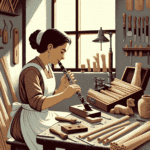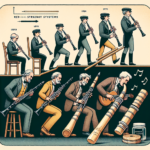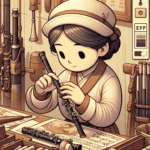Ever wonder how clarinetists in the past adjusted their reeds to achieve just the right sound? Clarinet reeds play an absolutely vital role in the instrument's tonal quality, and tweaking them has always been part art, part science. Today, we rely on reliable tools, techniques, and supplies for reed adjustment—but how did musicians in the past perfect their craft when these modern conveniences weren't available?
Reeds haven't always been the consistent little pieces of craftsmanship we know today. Historical clarinet reed adjustment methods show us the creativity and commitment of early musicians aiming for excellence. Whether shaping reeds with tools made at home or using natural resources, clarinetists of years gone by found ways to create a warm, rich resonance for their instruments.
Early Techniques: Knives and Sandpaper
Reed work might seem challenging at first glance. But look a little closer, and you'll find a rich history of techniques passed down through generations. Early clarinetists used sharp knives, straight razors, or penknives to shave their reeds. Balancing strength and delicacy was crucial; too much pressure could crack or thin out a reed too quickly, while not enough might leave players struggling to produce clear tones.
Sandpaper became a finishing tool later on. With different grits available, it allowed players to smooth the surface gently. It also helped refine their final adjustments and proved particularly useful for evening out inconsistencies. These techniques were often closely guarded secrets. Can you picture young clarinetists in attics or dimly lit rooms, carefully perfecting reeds by hand?
| Tool | Purpose | Skill Required |
|---|---|---|
| Sharp Knives | Initial shaping and thinning | High |
| Straight Razors | Precise cutting and trimming | Very High |
| Sandpaper | Smoothing and final adjustments | Medium |
The Water Method: Soaking for Softness
Another interesting approach involved water. Players would soak their reeds to soften them first. By saturating the fiber material, adjustments became more forgiving. Soaking also gave reed fibers elasticity, making them easier to shape for longer play sessions. After adjusting, clarinetists might sun-dry their reeds or let them air-dry near fireplaces—quite different from today's controlled methods!
Homemade Reed-Holding Clamps
A detail often overlooked today is the use of specialized reed-holding clamps. These were homemade devices designed to hold reeds securely while being worked on—especially for sanding or carving adjustments. Most were made from readily available scraps of wood or metal, showcasing the resourcefulness of musicians. Clarinetists would also keep small vials of oil or wax during these processes to protect the reed surfaces from wear and tear.
Reed Cycling Rituals
Ever heard of reed cycling rituals? If you think today's clarinetists have quirks about breaking in reeds, wait until you hear about earlier times! Many believed reeds had to be played under specific weather conditions or rotated after certain performances to reach their best elasticity and tone. Some said that using a reed for an important concert without proper preparation could lead to a tonal disaster—mixing old traditions with a touch of modern humor.
The Influence of Clarinet Brands
The rise of clarinet brands like Martin Freres played an important role in changing methods, even in historical contexts. Known for excellent craftsmanship and design across generations, quality-focused brands helped musicians address reed challenges with improved instruments. Their influence shows how top-notch materials enhanced everything from reed adjustment to final performance quality. It's no wonder that many historical clarinetists used clever strategies to complement the advanced acoustics of high-quality brands.
Modern Precision vs. Traditional Craftsmanship
Today's reeds, polished by machines and designed with uniform precision, eliminate many challenges our “reed ancestors” faced. Yet some experienced players still prefer these classic adjustment methods, choosing knives and sandpaper over modern tools. For them, the personal touch of crafting reeds by hand adds a special quality to the music-making process.
Learning Historical Techniques Today
For those interested in trying these historical techniques, start with safer tools like reed knives and practice on rejected reeds. You'll likely ruin a few before getting it right. But when you see how a tiny adjustment at the base changes your tone, you'll feel incredibly satisfied. It's similar to seasoning a cast-iron skillet—requiring time, patience, and a bit of intuition.
Conclusion
Did historical reed adjustment methods influence how music was performed 100 or 200 years ago? Without a doubt. While techniques have become more streamlined, the core idea remains the same: musicians, both past and present, share a passion for creating beautiful, resonant notes to captivate audiences. Keep that spirit alive and don't be afraid to experiment—the musicians of the past would surely approve!







